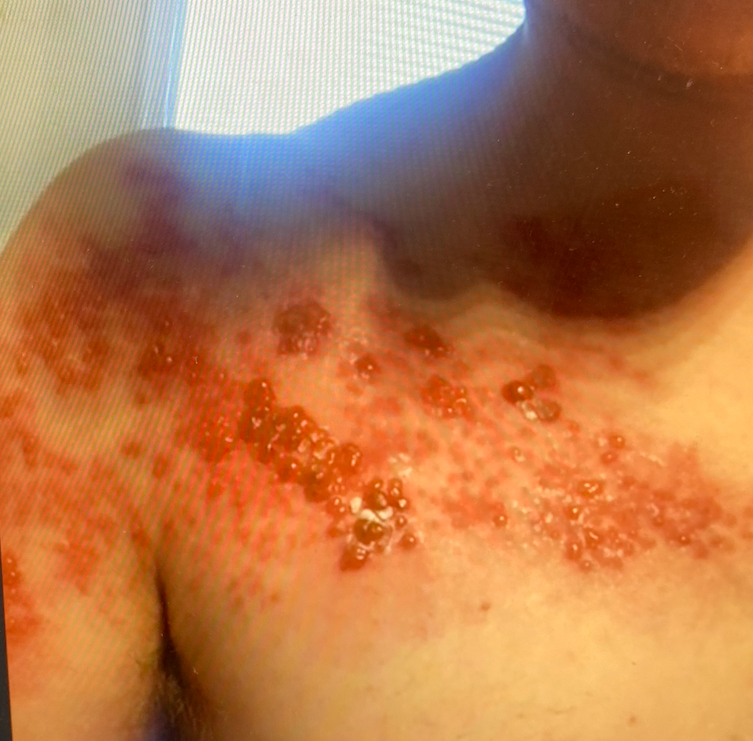Herpes Zoster (Shingles)
Introduction to Herpes Zoster
Herpes Zoster, commonly known as shingles, is a painful rash caused by the reactivation of the varicella-zoster virus, the same virus that causes chickenpox. Once you’ve had chickenpox, the virus remains dormant in your body and can reactivate years later as shingles.
What Causes Herpes Zoster?
After a person recovers from chickenpox, the varicella-zoster virus stays in the b
ody, lying inactive in nerve tissue. Years later, the virus may reactivate, often due to weakened immunity, causing shingles. Factors that can trigger this reactivation include:
- Weakened Immune System: As people age, their immune systems naturally weaken, which increases the likelihood of shingles. Additionally, those undergoing treatments such as chemotherapy, radiation, or those with chronic illnesses like HIV/AIDS, are more susceptible.
- Age: Shingles is more common in individuals over 60 years of age.
- Stress or Illness: Severe stress or a recent illness can also trigger the virus to reactivate.
What Does Herpes Zoster Look Like?
Shingles typically begins as a burning or tingling sensation, often accompanied by flu-like symptoms such as fever and headache. This is followed by:
- Rash and Blisters: The rash usually forms on one side of the face or body, often
 wrapping around the torso. The blisters may burst, ooze, and then crust over.
wrapping around the torso. The blisters may burst, ooze, and then crust over. - Flu-like Symptoms: Some individuals may also experience fever, headache, or chills.
- Pain: The affected area can be extremely painful and sensitive to touch.
Complications
If not treated promptly, shingles can lead to several complications:
- Post-Herpetic Neuralgia (PHN): A condition where pain persists long after the rash has healed, sometimes lasting months or even years.
- Vision Problems: If shingles affect the eye, it can lead to serious issues such as glaucoma or even blindness.
- Skin Infections: Open sores from the rash can become infected, leading to additional complications.
How is Herpes Zoster Treated?
Early treatment is crucial to reduce the severity and duration of a shingles outbreak. Common treatments include:
- Antiviral Medications: Medications such as acyclovir, valacyclovir, or famciclovir can shorten the duration of the outbreak if taken within 72 hours of symptom onset.
- Pain Management: Over-the-counter pain relievers or prescription medications may be recommended to manage discomfort.
- Corticosteroids: In some cases, corticosteroids are prescribed to reduce inflammation.
Preventing Herpes Zoster
The shingles vaccine is recommended for adults aged 50 and older to reduce the risk of developing shingles and its complications:
- Shingles Vaccine: The vaccine lowers the risk of getting shingles by about 50% and can also reduce the severity if you do get shingles.
- Avoid Contact with Others During an Outbreak: To prevent spreading the virus, avoid close contact with those who have never had chickenpox or who are immunocompromised.
